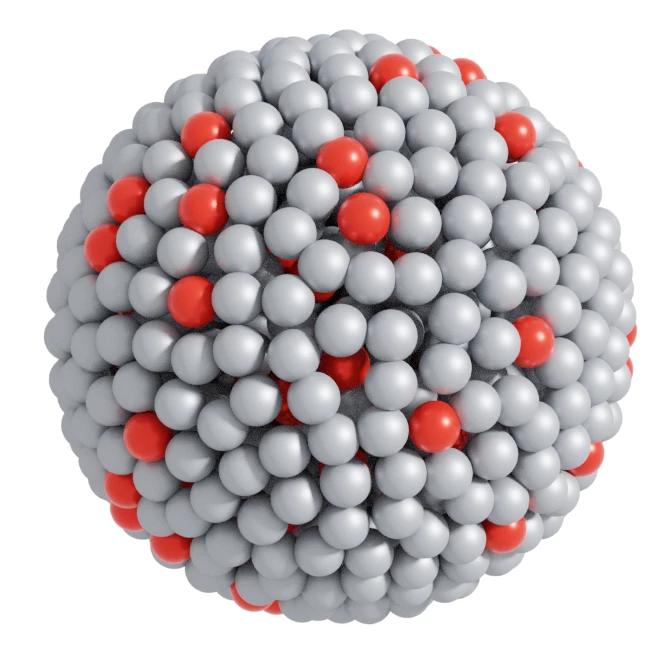Researchers have created a form of platinum that can remain liquid at room temperature, by mixing tiny amounts of the precious metal with gallium. This new liquid platinum performs catalytic reactions more efficiently than a solid platinum catalyst, using far less of the metal.
Platinum is a powerful catalyst for many different reactions, most commonly used in fuel cells and in catalytic converters to clean up vehicle emissions. The problem, however, is that it’s one of the rarest and most expensive metals on Earth, limiting the scale of devices with platinum catalysts. As such, scientists have been experimenting with new ways to reduce the amount of platinum needed for these devices or even remove it entirely.
Now, researchers in Australia have found a novel way to drastically reduce the amount of platinum required for these reactions. Rather than anchoring platinum atoms onto a solid matrix, the team found a way to suspend them in a liquid, making it more efficient and reusable.
First, platinum is dissolved into gallium at around 300 °C (572 °F) for a couple of hours. Then, once the mixture cools down, it becomes a catalytic material that remains liquid above gallium’s low melting point of 29.8 °C (85.6 °F), which is room temperature on a warm day. That’s far lower than platinum’s usual melting point of 1,768 °C (3,215 °F).
The resulting material had some amazing properties. It could perform both oxidation and reduction reactions, where oxygen is added to or removed from a substance. Even with platinum making up just 0.0001 percent of the atoms in the alloy, the liquid catalyst was over a thousand times more efficient than a solid catalyst composed of 10 percent platinum. Better yet, by-products don’t build up on the catalyst and reduce its effects like they do for solid ones.
On closer inspection of the liquid catalyst, the team found that no two atoms of platinum ever touch each other – they remain dispersed throughout the gallium. Strangely, the platinum seems to be exerting its influence on the surrounding gallium, which does the catalytic work instead.

“The platinum is actually a little bit below the surface and it’s activating the gallium atoms around it,” said Dr. Andrew Christofferson, an author of the study. “So the magic is happening on the gallium under the influence of platinum. But without the platinum there, it doesn’t happen. This is completely different from any other catalysis anyone has shown, that I’m aware of.”
The team says the new technique demonstrates a way to stretch our thin supplies of platinum further, allowing far smaller amounts to be used for the same or even stronger catalytic effects. This should also bring costs down, allowing effective catalysts to be used more widely.
But the benefits go beyond platinum – the team says this kind of liquid metal catalyst could be tested with over 1,000 other possible combinations of elements, resulting in just as many different reactions. Investigating these will be a focus of future work.
The research was published in the journal Nature Chemistry.
Source: Scimex




